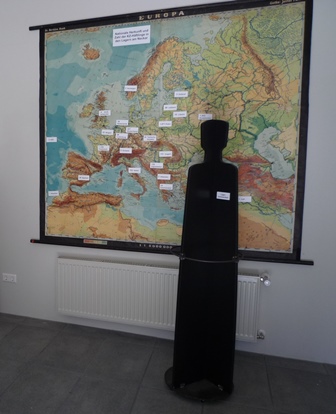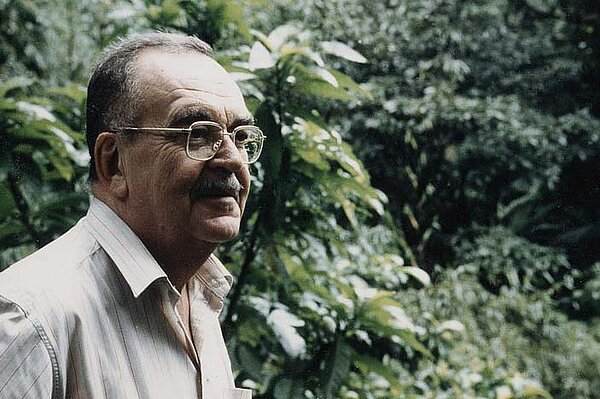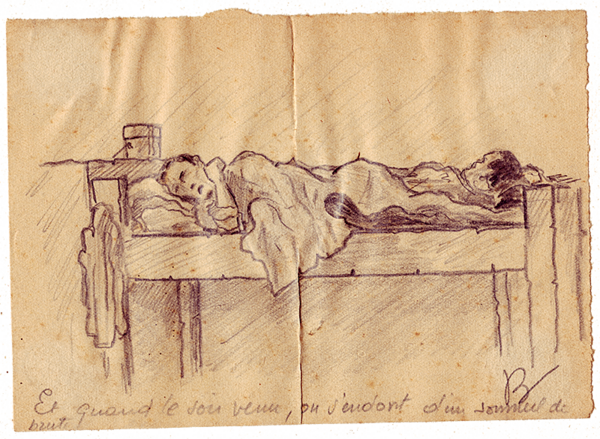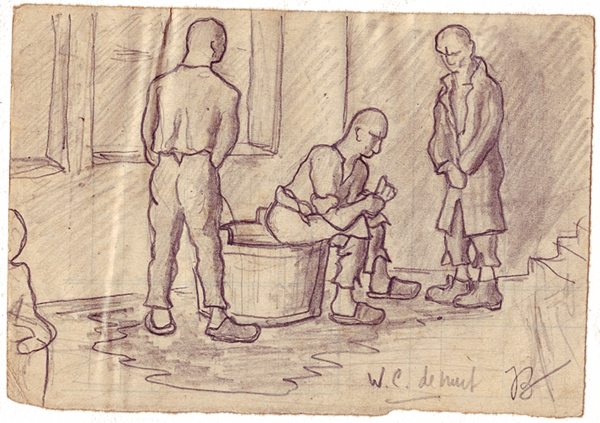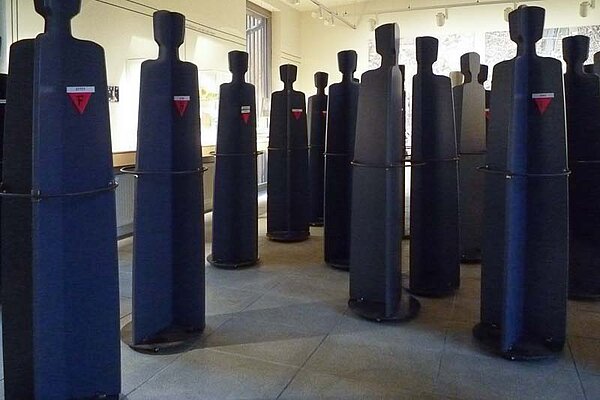Room -"Neckar Camp Concentration Camp Complex"
A Room to Discover on Your Own
This exhibition area is the largest in the Memorial. It is divided into different sections, and structured so that the visitors can discover the history themselves.
A map of Europe shows both the origins and the number of prisoners from each of the various countries - People from all over Europe were coercively gathered at the Neckar in 1944/45.
Various thematic stations are dedicated to the daily routines of the prisoners. Every theme is independent from the others, and therefore the visitor must not follow any given order. The view of the school from the southern wall is used as an important visual centre, because the window, or rather what one sees through the window, is part of the stations.
Drawings by Jacques Barrau
The visitors can find both original artificats in the display cases, but also a symbolic collection of objets that sometimes evoke more mystery than answers. The unraveling of these mysteries is part of the educational concept of the memorial.
The drawings of the the former prisoner Jacques Barrau serve as a central theme throughout the exhibition. He somehow managed to secretly draw while imprisoned. Since there are no photos from the Neckarelz camp, his drawings serve as the most important visual source of the Neckarelz concentration camp.
Large-sized aerial photgraphs from both 1944 and today enable us to have a better understanding of the layout of the Neckarelz-Obrigheim area. A map gives an overview of the armament factory and the concentration camp complex on the Neckar, the river that also lends its name to the entire area.
27 European Biographies
The room is filled with 27 life-sized figures, who when looked at more closely all exhibit different features. They represent the "camp community" in a group that is the size of a typical school class.
At the same time, the prisoners, their diverse countries of origin and their various categories of imprisonment remain in the foreground. However, one can also find watchmen and Neckarelz residents. The visitors can find and read the accompanying biographies on the wooden boards with the heading "27 European Biographies".
The Drawers
A large desk gives us an idea of the burocracy in the camp. The camp commandant´s photos and biography are proof that this office was the scene of the perpetrator´s activities. The names of all the prisoners in the six Neckar camps, listed in alphabetical order, as well as the names of the dead - sorted by date of death, can be found in two binders.
At first glance, the exhibition seems to have little text. That is true for all the rooms of the memorial. Further information is hidden in the drawers, which the visitor can open when they are interested in more details.


